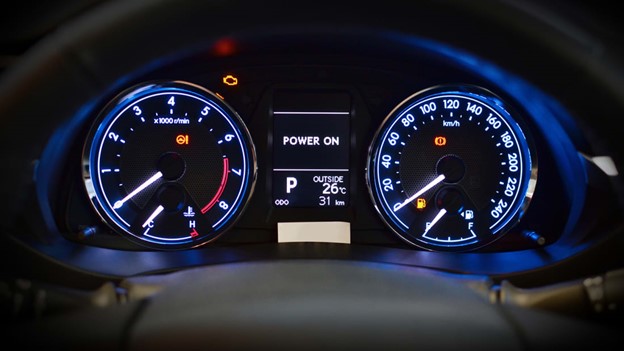I think dashboard is an overused, ill-defined word in many enterprises. As I was trying to create visibility into the success and challenges in our operations, I decided that I needed a dashboard (see blog on data). It sounds very simple. Everybody uses dashboards in business these days. Then I started to think about the origin of the dashboard and how that might help me create my own.

Most of us were using dashboards before we started working. We look at them all the time when we are driving our cars and really don’t think too much about them. Why is that? Because they are very easy to use and tell us quickly when we need to make a correction or solve a problem. Let me share some analogies to dig in further.
First, there are the must have gauges and dials and digital signals that we use throughout our drive – speedometer, gas gauge, and odometer. These are the few key pieces of information we need to know on a regular basis to keep us on track. This way we know when we need to speed up and slow down, when we need to add gas and when we need an oil change. So, if I apply that to business needs, I must figure out how to measure how quickly or slowly I am addressing client needs (my speedometer), I need to know when to replenish or enhance my assets (my fuel gauge) and I have to keep the organization in good shape by regularly maintaining my assets (my odometer). The assets you are concerned about might be both physical assets and people assets. These 3 dashboard gauges in the car help me to make corrections on shorter intervals and I look at them frequently while I am driving. So, ask yourself what key indicators do you need to review on a regular basis to keep your enterprise running smoothly at the right speed? Where do you have the agility to make quick corrections?
Then there are the indicator lights or sounds that allow me to know when I have a real problem. My car makes a sound and flashes an indicator light when there is a problem with the battery, the engine, the oil system, or my tires. When I hear these sounds and see the indicator come on, I know I have a problem that must be addressed immediately. Sometimes I need to get additional data by looking at my message page to find out how low a tire is; or, I may need to take it somewhere to have the computer analyzer understand more about the specific problem. Following this second set of indicators into a business setting, you should determine what indicators do you need that will help you determine when you need special action plans or corrective action teams. What are the signals that tell you that you have a significant problem that has to be addressed with a higher level of resources? It is bigger than a simple correction of moving the gas pedal up or down, you need a team understanding the problem and putting in place some larger corrective actions to get your car back on the road.
Lastly, we have quite a few gauges and indicators that we may not use often, or maybe we don’t use them at all. Think of this as all that other data that we may not need to use on a regular basis, but we might refer to it from time to time. On our car’s dashboard we might have an outside temperature gauge that I refer to usually when the temperatures are dropping and I’m worried about the road icing. I also have a compass indicating direction that might help me if I get a bit turned around. Most of us have a lot of data that we just look at every now and then to make sure nothing unusual is going on in our businesses. This data, while interesting, may not be the best data to put on your dashboard. It might end up distracting you from the day to day management of your business.
So, the next time you want to put a dashboard together for your business, go sit in your car. Think about the gauges and indicators you need to keep that complex machine operating correctly. Then, really think about identifying the key data that will help you make good decisions and modifications to keep your enterprise running smoothly.
Need help? Get in touch with IMEC!




